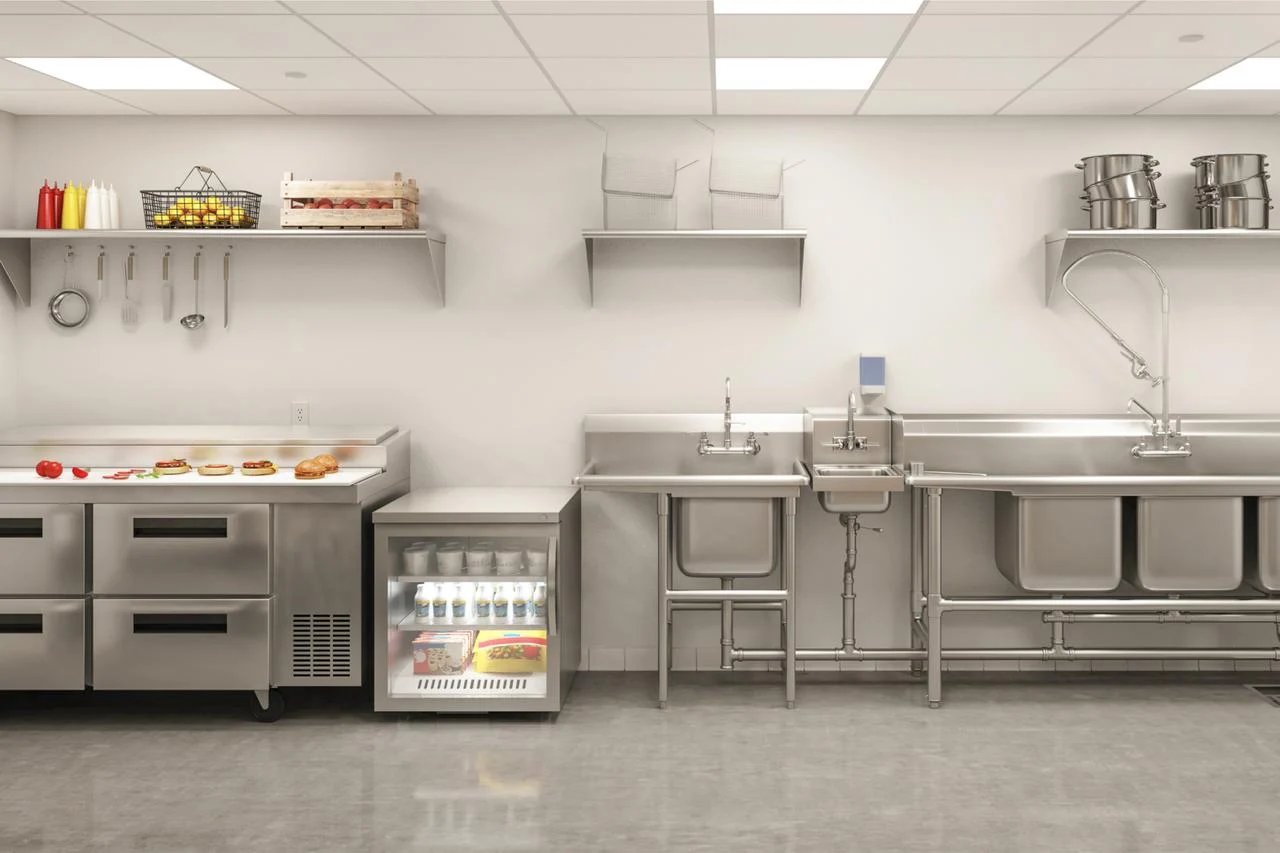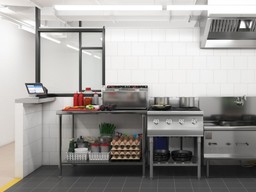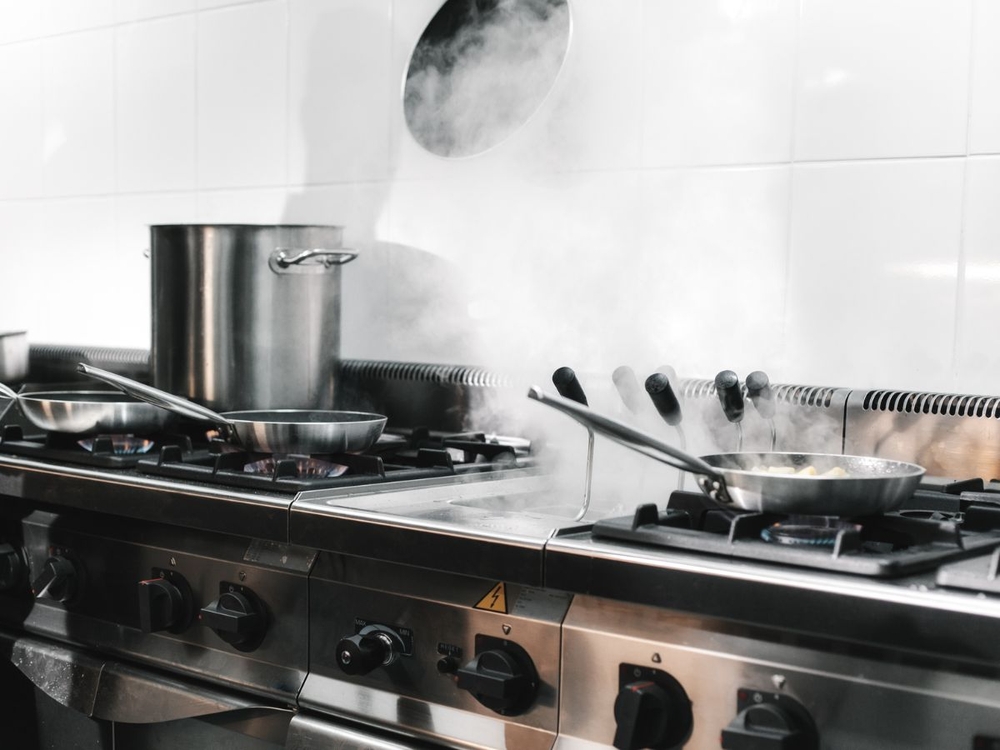How to start a Commissary Kitchen? Your complete guide to success!
Table of Contents
CloudKitchens
How many tacos can be delivered from a 1000sqft restaurant?
The same amount as a 200sqft ghost kitchen.

Starting a commissary kitchen can be a lucrative venture for food entrepreneurs looking to provide shared commercial kitchen spaces for others. Ready to dive deeper into the process? Check out a step-by-step guide on how to start a commissary kitchen to launch successfully!
You may have noticed that the demand for food delivery in your city has increased dramatically. From Uber Eats to DoorDash, there are plenty of apps to support the demand. But how about kitchens? Consumers are often satisfied to see that food has arrived at their doorstep and to think no further.
In order to get to their doorsteps, delivery orders originate from a commercial kitchen. For a savvy businessperson, commissary kitchens could be a way to enter the growing market for food delivery. But what is a commissary kitchen and how does it work? In this article, we will cover the ins and outs of starting a commissary kitchen.
Commissary kitchen profitability
Your first concern when embarking on any new business venture is naturally, will I make a profit? How much profit a commissary kitchen will make depends on the demands of the market where you open the kitchen.
Commissary kitchens are profitable because there is plenty of demand for them.
By looking at the past five years, you can see that food delivery is growing 300% faster than dine-in options at brick-and-mortar locations. The growth of food delivery is driving the need for a variety of food options, cooks to make the food, delivery drivers, and other entrepreneurs like you who might develop and maintain a commissary kitchen.
Who are your renters?
One of the benefits of renting out a commercial kitchen is that you have a diversity of renters. You won’t be dependent on any single kind of tenant. However, it’s essential to know the demands of the market that you are in.
Take time to study the food market trends of the area where you’re establishing your kitchen. For a market where homemade pastries are in high demand, you’ll want your kitchen to be prepared for pastry chefs.
Some of your principal renters could include:
- Restaurant chains: Restaurant chains that are already well-established in their market may look for a commissary to try new markets.
- Local restaurants: Local restaurants that haven’t yet tried a delivery option may use a commissary kitchen to test delivery. Think about the local restaurants that you could imagine renting a commissary kitchen.
- Food Entrepreneurs: Given the lower upfront costs of renting a commissary kitchen than opening a storefront, an individual with an idea can test the strengths and weaknesses of the commissary kitchen. If you are well-connected in your community, renting to someone that you know in your city could be a good place to start.
Try diversifying the kinds of businesses that rent your kitchen so you can tap into different communities and expand your services. Learn about the most in-demand services in your community so you’re prepared to offer storage for that hot new food truck on Main Street.
Make the best out of your commercial kitchen space by surveying the local communities to get a real understanding of them. Community commercial kitchens are a great way to introduce new ideas and cater to different communities.
How much do commissary kitchens make?
Commissary kitchens are most profitable when the expectations of the tenants are met or exceeded. The tenants may need a kitchen to cook in, but they also will want to have a satisfying experience cooking in your kitchen. Provide all the amenities that you can so your tenants will not only renew their leases but also refer their chef friends to you.
To make an estimate of how much you will make, you’ll need to gather some important numbers that are specific to your area. For your renters, a commercial kitchen can cost $15-$40 by the hour and $250-$1250 by the month. Check the average rent for a commissary kitchen in your area and work backward from there. What is a competitive rate that you can offer?
You’ll need to know the maximum number of hours that your commercial kitchen can operate as well as its maximum occupancy.
Once you know these limits, calculate the most that you can make depending on the hourly and monthly renting rates that you establish. You should also calculate the rate that you need to charge to break even with your expenditures such as electric, gas, and other energy consumption.
Taking the time to calculate several tables that estimate necessary, conservative, and optimistic profits will help you plan for every scenario.
How do I start a commissary kitchen? Step by Step
1. Establish your parameters
Before you start doing anything else, you need to ask yourself plenty of questions to establish who you want to rent to and what your financial limits are to create the ideal kitchen scenario for your target business.
Some questions to consider include:
- What kinds of businesses do I want to rent to?
- What types of equipment will those businesses require?
- What specialty items will those businesses need?
- What can I include in the kitchen to make it the most appealing option?
If you hope to accommodate bakers in your commercial kitchen, you’ll need to supply specific equipment such as conventional ovens, mixing bowls, measuring cups, and more. Whichever type of food business you plan on catering for, it’s crucial to have the right tools and specialized equipment whether it’s for food preparation, food production, or food service. Regardless, the kitchen needs to be industrial and up-to-code.
2. Look for properties
Would you prefer a property that already has the foundations of a commercial kitchen or a previously working one? Or, will you look for a space in which you can build everything yourself?
Each option has benefits and drawbacks.
An already-established commercial kitchen may save you some money. However, the equipment needs to be in good enough condition that you won’t spend more to repair it than it’s worth.
Starting from the ground up means that you can hand-pick every appliance in the commercial kitchen. It could be important to you, and to your tenants, to have premier ranges in the kitchen.
Luckily, it’s now easy to find shared, fully equipped kitchens in popular locations like New York.
3. Learn rules and regulations
Apply for a food-processing license in your state. Each state has its own requirements for you to obtain a license, so make sure you visit the Department of Agriculture website for your state. For a commercial license, there are usually fees.
For example, the USDA regulates that a commercial kitchen cannot cook meat that is more than 3% raw or 2% cooked. Stay aware of the requirements for your tenants’ food safety so that everyone can stay in business.
Learn how often you can expect your facility to be inspected. Depending on the risk level for the food products that are made in the facility, you may be subjected to more frequent inspections.
The OSHA, the Occupational Safety and Health Association, has standards for employee safety that you’ll need to follow. Additionally, you need to be aware of local laws and regulations for your business.
4. Kitchen Design
Hire a professional kitchen designer to plan your commercial kitchen to the necessary standards. A professional will understand the correct layout for workflow in the kitchen, and adhere to safety regulations, and they may even be able to teach you more about your needs.
The Food Corridor website is a good place to start looking for kitchen designers and other resources. There are plenty of commercial kitchen consulting firms with years of experience to offer you.
5 Commercial Kitchen Layouts & Designs →
5. Install equipment
You may want to hire contractors or builders that your kitchen designer recommends. If they have had positive experiences with them in the past, that’s valuable information. Read more about the different kitchen equipment needed to start your business.
Kick the commissary kitchen and instead go ghost: The benefits of ghost kitchens
Ghost kitchens streamline the finances and supplies for your operation because they support businesses that focus only on food delivery. If you target the food delivery market by operating in an Austin ghost kitchen, for example, you can tap into the growth happening nationally.
Instead of juggling both a dine-in option and delivery, you can focus on perfecting delivery for the greatest profits.
To make the most efficient ghost kitchen and to satisfy your tenants, you’ll want to provide these features:
- Stations for delivery car drivers to park. To make a smooth flow in and out of the ghost kitchen, you’ll need to consider how driver traffic will move.
- Smooth transition between completion of the order and handoff to the driver. Ghost kitchens are all about maximizing the efficiency of food delivery.
- Software to combine the many food delivery service apps so the tenant can see all of their orders in one place.
Software to combine the many food delivery service apps so the tenant can see all of their orders in one place. Check out the ultimate guide to ghost kitchens to see why this is the better alternative.
Learn more with CloudKitchens
Are you hoping to learn more about ghost kitchens? CloudKitchens provides resources with more details and services that you can take advantage of.
CloudKitchens is the industry standard when it comes to ghost kitchens that satisfy and exceed the needs of our tenants.
Ready to start firing up those grills? Schedule a tour of a CloudKitchens facility today!
Find the nearest CloudKitchens, we are available in many locations around the US. Whether you’re looking for a commercial kitchen in Orlando or a ghost kitchen in Chicago, Phoenix, or Portland, we’ve got you covered.
Read more:
- How much does it cost to rent a Commercial Kitchen? Everything you need to know!
- What are the industrial kitchen restaurants and how to choose
- What is a Commissary Kitchen? Unlock the benefits of this business model
- Commercial Kitchen Code Requirements: What You Need to Know
- 5 Examples of Commercial Kitchen Layout to Optimize Space
Explore ghost kitchen locations across the US:
- Ghost kitchens in San Francisco;
- Ghost kitchens in LA;
- Ghost kitchens in NYC;
- Ghost Kitchens in Toronto;
- Ghost Kitchens in Atlanta;
- Ghost Kitchens in Dallas;
- Ghost Kitchens in Chicago;
- Ghost Kitchens in Denver;
- Ghost Kitchens in Miami.
| DISCLAIMER: This information is provided for general informational purposes only and the content does not constitute an endorsement. CloudKitchens does not warrant the accuracy or completeness of any information, text, images/graphics, links, or other content contained within the blog content. We recommend that you consult with financial, legal, and business professionals for advice specific to your situation. |
Sources:
- Roaming Hunger. Guide to Ghost Kitchens. https://roaminghunger.com/blog/15623/ghost-kitchens-everything-you-must-know
- The Kitchen Door. List My Kitchen. https://www.thekitchendoor.com/list-my-kitchen
More insights & stories
There’s more where that came from.
Get in the know and check out our additional insights




